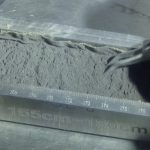A new quantum device defies the concepts of ‘before’ and ‘after’

One thing leads to another. It sounds obvious, but in the quantum realm, the saying doesn’t always ring true. A new quantum device can jumble up a sequence of two events so that they take place in both orders simultaneously, researchers report in a paper in press in Physical Review Letters.
“In everyday life, we are used to thinking of events having a definite order,” says physicist Jacqui Romero of the University of Queensland in Australia. For example, in the morning, you might brush your teeth before washing your face, or vice versa. But in the quantum realm, both can be true simultaneously.
The device, known as a quantum switch, works by putting particles of light through a series of two operations — labeled A and B — that alter the shape of the light. These photons can travel along two separate paths to A and B. Along one path, A happens before B, and on the other, B happens before A.
Which path the photon takes is determined by its polarization, the direction in which its electromagnetic waves wiggle — up and down or side to side. Photons that have horizontal polarization experience operation A first, and those with vertical polarization experience B first.
But, thanks to the counterintuitive quantum property of superposition, the photon can be both horizontally and vertically polarized at once. In that case, the light experiences both A before B, and B before A, Romero and colleagues report.
The results mark “the first steps toward controlling a new regime of quantum physics,” says physicist Giulio Chiribella of the University of Oxford and the University of Hong Kong, whose team came up with the quantum switch idea but who was not involved with the experiment.
Another team of researchers had previously built a similar quantum switch, but the new device eliminates an ambiguity. In the earlier quantum switch, if A came before B, the light passed through a slightly different part of the apparatus than if B came before A. That difference made the claim of simultaneously performing two identical operations in both orders less clear-cut. In Romero and colleagues’ switch, the light passes through the same spot regardless of which operation comes first.
The quantum switch could potentially be useful in quantum communication and quantum computing (SN: 3/31/18, p. 12). One weird new superpower that the quantum switch provides is the ability to communicate through channels where any information that goes in is scrambled, Romero and colleagues report in a paper posted July 19 at arXiv.org.
Imagine calling a friend on a phone line that completely garbled your voice. If you sent that indecipherable missive through another noisy phone line, your message would still be nothing but noise. That’s not necessarily true when using a quantum switch. The researchers showed that, if photons are passed through two such noisy channels in a superposition— traversing channel A before channel B and simultaneously B before A — some information can be extracted.
“This is one of the things that I found the most magical,” Chiribella says.



